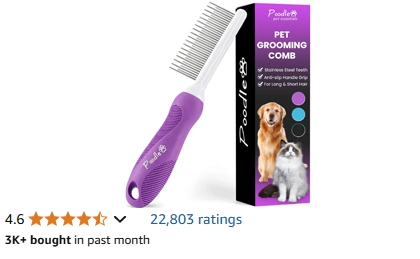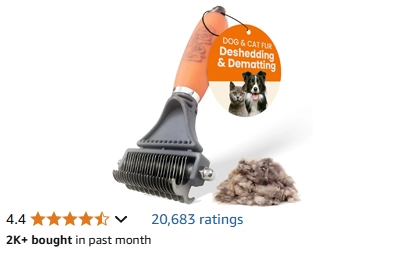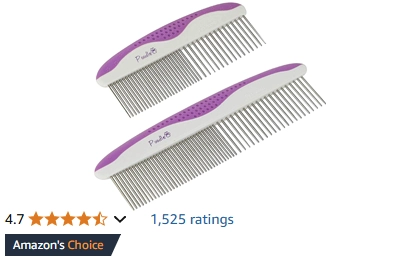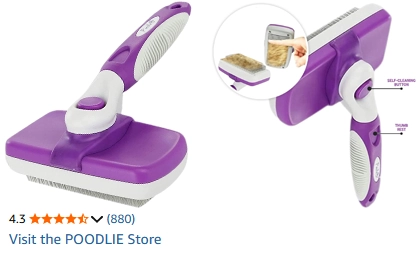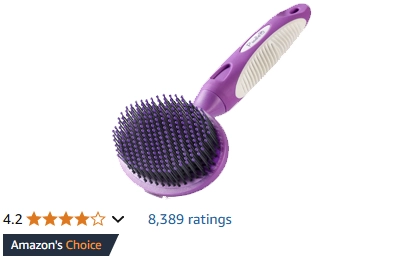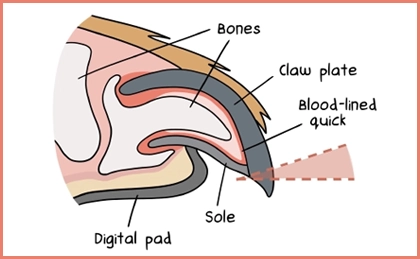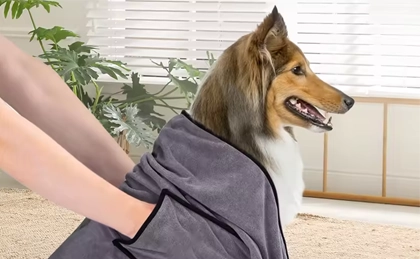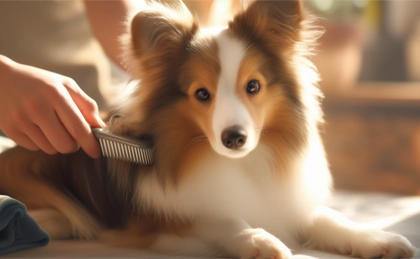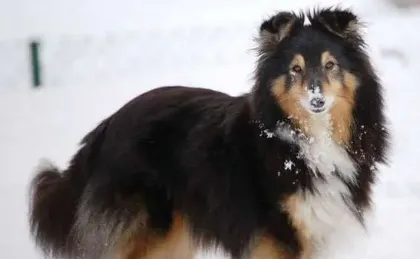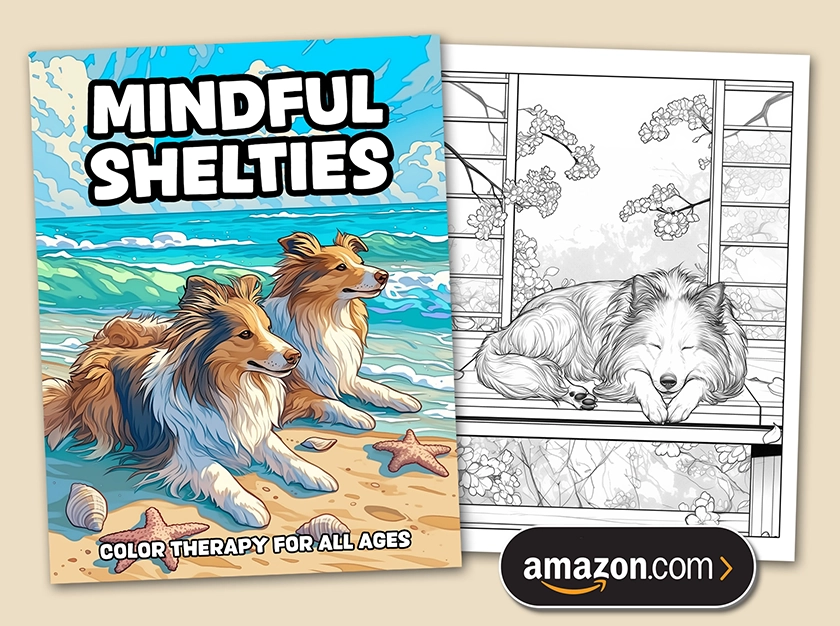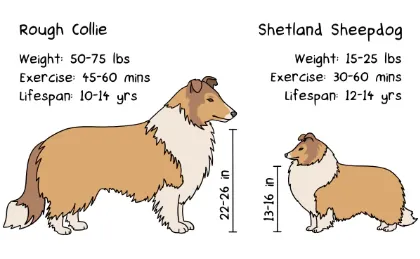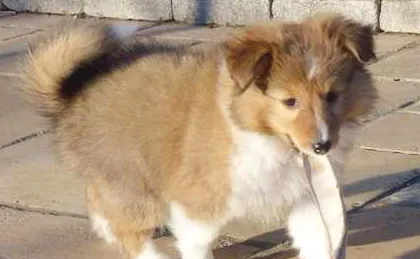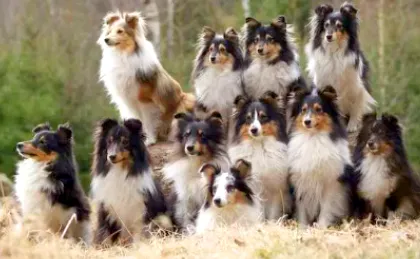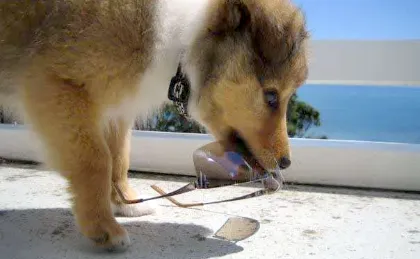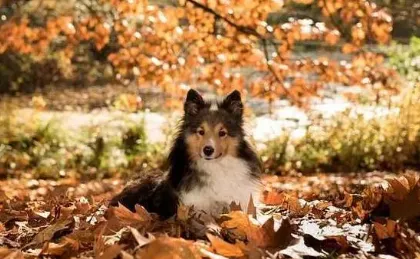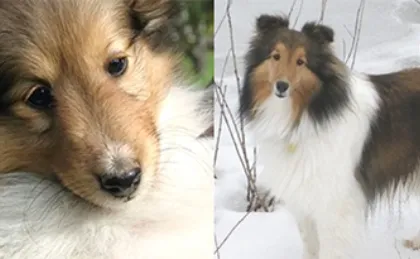The best dog brushes for Shelties are ones specifically designed for dogs with thick double coats. They allow you to get deep into the undercoat to extract the fluff, which is shed moderately year-round with much heavier molts right before summer.
Proper grooming is not just about appearance. If a Sheltie's coat is allowed to become tangled and matted, bad things happen:
- Delicate skin is pulled painfully tight at the joints
- Dirt, irritants, and microbes collect in the coat
- Moisture, heat, and bacteria create skin sores ("hot spots")
- Reduced airflow in the undercoat limits thermoregulation
Here are the best brushes for Shelties to make your home grooming sessions fast, efficient, and painless.
#1. A Detangling Comb
Ideal for line brushing, a detangling comb enables you to work through the dense undercoat inch by inch without tugging. Start at the back of the neck and work in horizontal sections down to the tail. The long, wide-spaced teeth lift out loose undercoat from near the skin so you can remove stale undercoat gently and efficiently.
#2. A Dematting Rake
A dematting rake is great for tackling really dense areas like the hind legs, or butt, if you will. Shelties don't like you messing with this area, but it quickly becomes a deep, dark forest if left unattended. The dematting rake has sturdy tines that claw through the long guard hairs and pull out pockets of dead undercoat.
#3. A Fine-Toothed Comb
A fine-toothed comb is vital for precision work on areas where Shelties are most prone to tangling: behind the ears, under the collar, and in the joints. The close-set teeth allow you to catch and gently tease out knots caught in the long, wispy fur, while preventing the build-up of nasty mats.
#4. A Slicker Brush
A slicker brush is a popular tool for the Sheltie's outer coat. Once you've extracted all the loose undercoat, use a slicker in long, smooth strokes to remove loose guard hairs, stimulate blood flow, and distribute the coat's natural oils for a soft, shiny finish.
#5. A Bristle Brush
A soft bristle brush is a gentler alternative to a slicker, especially if your Sheltie is nervous during grooming or has sensitive skin. Like the slicker, it smooths the outer coat, distributes natural oils, and gives a glossy finish with less stimulation on the skin.
How Often Should You Groom a Sheltie?
To keep your Sheltie's coat in top condition, aim to groom them at least once a week. If your Sheltie is shedding heavily—especially during seasonal coat blows in summer—you may need to brush more frequently. Unspayed females go through heavier shedding every 6-8 months due to hormonal cycles. And of course, you should never shave a Sheltie.
What To Do with All That Sheltie Fur
If you've ever looked at the mountain of fluff after a grooming session and thought, surely this could be useful for something—you're right! Sheltie fur is incredibly soft and can be repurposed in creative ways:
Spin it into yarn. Dog fur, also called chiengora, can be spun into yarn for knitting scarves, mittens, or even cozy Sheltie-themed sweaters.
Bird nests. Scatter leftover Sheltie fur outside in spring. Birds love using it to line their nests as it provides superb insulation for their eggs and hatchlings.
Needle felting. Sheltie fur works well for needle felting crafts, allowing you to create miniature felted animals, ornaments, or tiny Sheltie figurines.
Toy stuffing. Another one for craft lovers: clean and bag your leftover Sheltie fur for stuffing handmade amigurumi and plush toys.
Composting. Dog fur is rich in nitrogen, making it an excellent addition to your compost pile to enrich your garden soil over time.
Next time, after brushing your Sheltie, instead of tossing all that fur away, turn it into something useful or beautiful. It's always a fun challenge to see how much fur you can liberate from a Sheltie, and now you have more motivation than ever!
